

2003 was the year of the heat wave. The harvest was one of the earliest on record at Cheval Blanc.
2003 Petit Cheval is smooth, charming and shows very ripe fruit. It also possesses an harmonious and well-balanced structure.


2003 was the year of the heat wave. The harvest was one of the earliest on record at Cheval Blanc.
2003 Petit Cheval is smooth, charming and shows very ripe fruit. It also possesses an harmonious and well-balanced structure.
Weather conditions and vine’s growing cycle
Temperatures and rainfall
May was mild. However, the major variations in temperature disturbed flowering. The summer of 2003 was very hot and fairly dry. Temperatures were 3°C above average in June and August. Accumulated precipitation was close to normal from April to September despite several violent storms. Fortunately, Cheval Blanc was not affected by the hail that struck elsewhere in Bordeaux and caused considerable damage (6,000 hectares destroyed).
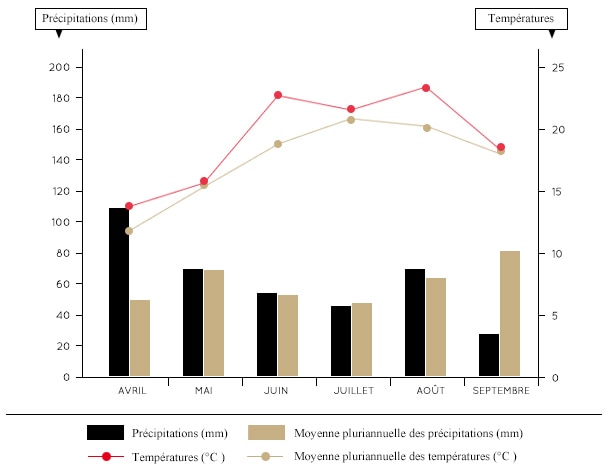
Water balance
In order to grow well, the vine needs for water stress to set in slowly so the grapes to ripen well and become concentrated. Rainfall in the summer of 2003 was average. That having been said, the very high temperatures and tremendously intense sunshine cased a great deal of transpiration in the vines, leading to great water stress. The drought conditions on the eve of véraison reduced the size of the grapes and led to low yields.

Growing season
The very high temperatures in 2003 resulted in an extremely early harvest. Bud break occurred on the 25th of March for Merlot and the 30th of March for Cabernet Franc. Both varieties reached mid-flowering at the same time: the 26th of May. Mid-véraison was observed on the 25th of July for Merlot and the 30th of that month for Cabernet Franc. This was two weeks ahead of 2002. Picking began on the 1st of September and ended on the 18th of that month. No harvest had been so early since… 1893.
The major fluctuations in temperature in late May disturbed flowering and caused significant coulure (shot berries). For instance, the maximum temperature on the 23rd of May was 29.2°C and just 14.9°C the following day.
Such an unusual weather pattern called for a different approach to green pruning. Leaf thinning and green harvesting were done with considerable restraint and not at all in certain plots. It was important to keep back leaves to protect the grape bunches from the hot sun.
| Phenological stage | Merlot 2003 |
Average 1994-2014 | Cabernet franc 2003 |
Average 1994-2014 |
|---|---|---|---|---|
| Bud break | March, 25th | March, 28th | March, 30th | April, 2nd |
| Flowering | May, 26th | May, 30th | May, 26th | June, 1st |
| Véraison | July, 25th | August, 2nd | July, 30th | August, 8th |
| Beginning of the Harvest | September, 1st | September, 19th | September, 9th | September, 27th |
| End of the Harvest | September, 10th | September, 27th | September, 15th | October, 5th |
| Number of days between… | ||||
| Bud break and Flowering | 63 days | 63 days | 58 days | 60 days |
| Flowering and Véraison | 61 days | 64 days | 66 days | 68 days |
| Véraison and Harves | 38 days | 48 days | 41 days | 50 days |
The fine weather led to grapes in prime condition with almost no grey rot.
Features of the vintage
Ripening and yields
Water stress in July put a stop to vegetative growth and led to small, concentrated berries. The grapes were fairly sweet with low acidity. Due to the extreme heat, the degradation of malic acid was particularly accentuated. Picking started early in order to avoid stewed fruit aromas.
2003 is a good vintage with very unusual characteristics. The drought conditions and low yields resulted in good concentration. Although the wine is rich in tannin, it is not hard due to the low acidity. However, it is also an early-maturing Cheval Blanc. Despite the moderately low yields, sorting was extremely rigorous (just 50% of the crop went into the grand vin).
| 2003 yields (hl/ha) | Average from 1996 to 2014 | |
| Merlot | 34.6 | 38.9 |
| Cabernet Franc | 29.0 | 34.2 |
Cellar work
Including 11% of press wine, the 2003 Petit Cheval was aged in 100% new oak barrels.
Blending
The high proportion of Cabernet Franc in the final blend maintains freshness in this very ripe year.
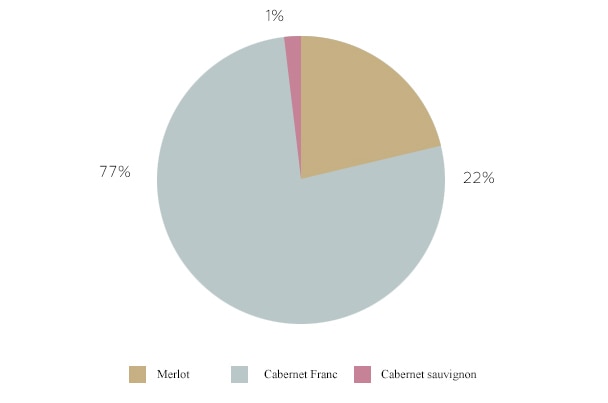
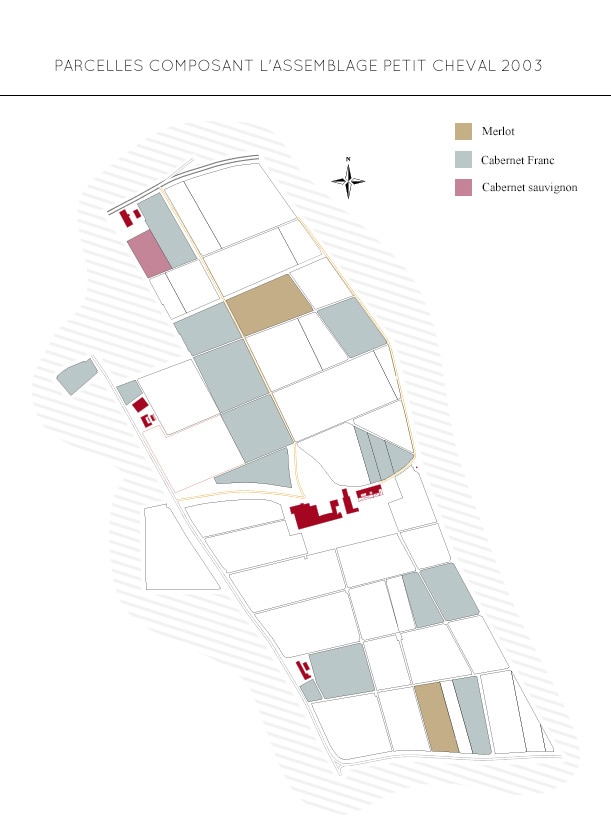
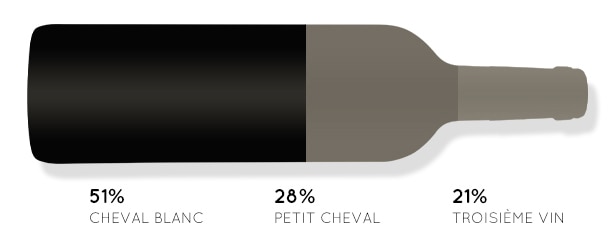
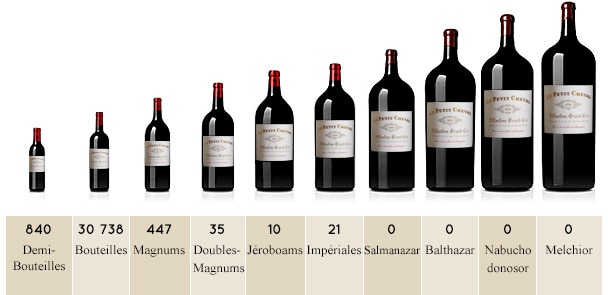
| Degree of alcohol | 13 |
|---|---|
| Total acidity (g H2 S04/L) | 3.15 |
| Volatile acidity (g H2 SO4/L) | 0.5 |
| pH | 3.76 |
| Total SO2 (mg/L) | 96 |
| Reducing sugar content (g/L) | 1.3 |
| IPT (DO280) | 53 |
Tasting
 Produced during the year of the heatwave, 2003 Petit Cheval is charming, rich, well-structured, and balanced.
It has a ruby-red colour.
The nose is quite expressive, with elegant floral notes and hints of Virginia tobacco. The bouquet goes on to reveal aromas of ripe fruit such as cherry and redcurrant. The oak has integrated beautifully.
The wine starts out smooth and vinous on the palate. The tannin is soft and silky, and the overall structure velvety and rich. 2003 Petit Cheval has plenty of body as well as a fine balance between freshness and candied fruit flavours. This balance lasts until the end of the beautiful aromatic aftertaste.
This smooth, charming, rich wine achieves a fine equilibrium between freshness (due to the large proportion of Cabernet Franc) and very ripe fruity flavours from Merlot.
Produced during the year of the heatwave, 2003 Petit Cheval is charming, rich, well-structured, and balanced.
It has a ruby-red colour.
The nose is quite expressive, with elegant floral notes and hints of Virginia tobacco. The bouquet goes on to reveal aromas of ripe fruit such as cherry and redcurrant. The oak has integrated beautifully.
The wine starts out smooth and vinous on the palate. The tannin is soft and silky, and the overall structure velvety and rich. 2003 Petit Cheval has plenty of body as well as a fine balance between freshness and candied fruit flavours. This balance lasts until the end of the beautiful aromatic aftertaste.
This smooth, charming, rich wine achieves a fine equilibrium between freshness (due to the large proportion of Cabernet Franc) and very ripe fruity flavours from Merlot.Produced during the year of the heatwave, 2003 Petit Cheval is charming, rich, well-structured, and balanced.
It has a ruby-red colour.
The nose is quite expressive, with elegant floral notes and hints of Virginia tobacco. The bouquet goes on to reveal aromas of ripe fruit such as cherry and redcurrant. The oak has integrated beautifully.
The wine starts out smooth and vinous on the palate. The tannin is soft and silky, and the overall structure velvety and rich. 2003 Petit Cheval has plenty of body as well as a fine balance between freshness and candied fruit flavours. This balance lasts until the end of the beautiful aromatic aftertaste.
This smooth, charming, rich wine achieves a fine equilibrium between freshness (due to the large proportion of Cabernet Franc) and very ripe fruity flavours from Merlot.



